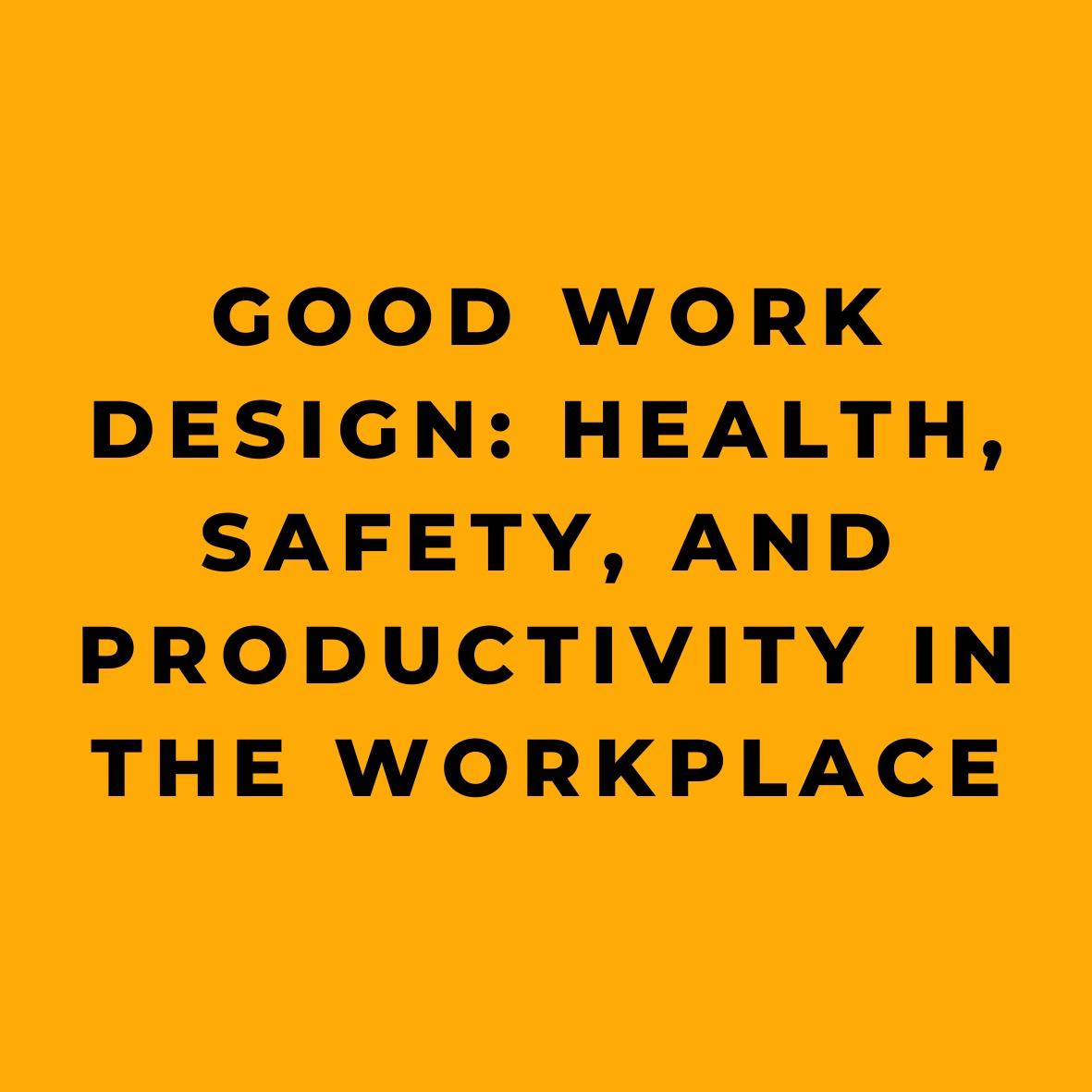As the modern workforce evolves, the importance of good work design in maintaining the health, safety, and productivity of workers has become increasingly apparent. This article is a very brief, and perhaps incomplete, summary of the document, “Principles of Good Work Design” by Safe Work Australia, and presents principles of good work design, applicable to any workplace, business, or industry, and explores their implications for work health and safety.
Safe Work Australia, established in 2008, is an Australian government statutory agency focused on developing national policies related to work health and safety (WHS) and workers’ compensation. As a tripartite body, it is jointly funded by the Commonwealth, state, and territory governments and represents a collaboration between governments, unions, and industry to reduce workplace death, injury, and disease. The agency is responsible for creating and implementing national WHS policies and strategies, conducting research, collecting and analyzing data, harmonizing WHS laws, and raising awareness of WHS as a crucial issue. Although Safe Work Australia serves as a national policy maker, the regulation and enforcement of WHS laws remain under the jurisdiction of the Commonwealth, states, and territories. The agency also engages in international collaboration and participates in conventions related to WHS policy.
The Importance of Good Work Design
- Good work design provides the highest level of protection: Workers have the right to the highest level of protection against harm. Good work design helps organizations efficiently achieve this goal by minimizing hazards and risks.
- Good work design enhances health and well-being: Well-designed work not only prevents harm but also improves workers’ overall health and well-being, contributing to their physical, mental, and social well-being.
- Good work design enhances business success and productivity: By preventing deaths, injuries, and illnesses, good work design can improve worker motivation, engagement, and productivity, fostering innovation, quality, and continuous improvement.
Factors to Consider in Good Work Design
- Good work design addresses physical, biomechanical, cognitive, and psychosocial characteristics of work: By systematically addressing these characteristics, good work design accommodates the abilities and vulnerabilities of workers and strives for balance and harmony among all aspects.
- Good work design considers the business needs, context, and work environment: Effective design takes into account the unique needs and context of the business, as well as the specific work environment, to create tailor-made solutions that are both safe and efficient.
- Good work design is applied along the supply chain and across the operational lifecycle: By consistently applying good work design throughout the supply chain and operational lifecycle, organizations can ensure that all aspects of the work process are designed with health and safety in mind.
- Actively involve the people who do the work: Involving workers in the design process helps ensure that their unique insights and experiences are considered, leading to more effective and practical solutions.
- Learn from experts, evidence, and experience: Drawing on expert advice, empirical evidence, and practical experience can help identify the best design practices and refine existing processes.
- Engage decision-makers and leaders: Good work design requires the commitment and involvement of decision-makers and leaders at all levels, who play a crucial role in driving change and ensuring the successful implementation of work design principles.
- Identify hazards, assess and control risks, and seek continuous improvement: The process of good work design involves identifying hazards, assessing and controlling risks, and continuously improving the work environment to ensure that health and safety remain a top priority.
Conclusion
Good work design is crucial for creating healthy, safe, and productive work environments. By implementing the ten principles presented in this article, businesses can protect their workers, improve overall well-being, and enhance productivity and success. By considering the unique needs of the workforce, engaging workers and leaders, and learning from experts and evidence, organizations can create work environments that foster the well-being of employees while contributing to the overall success of the business.
References:


